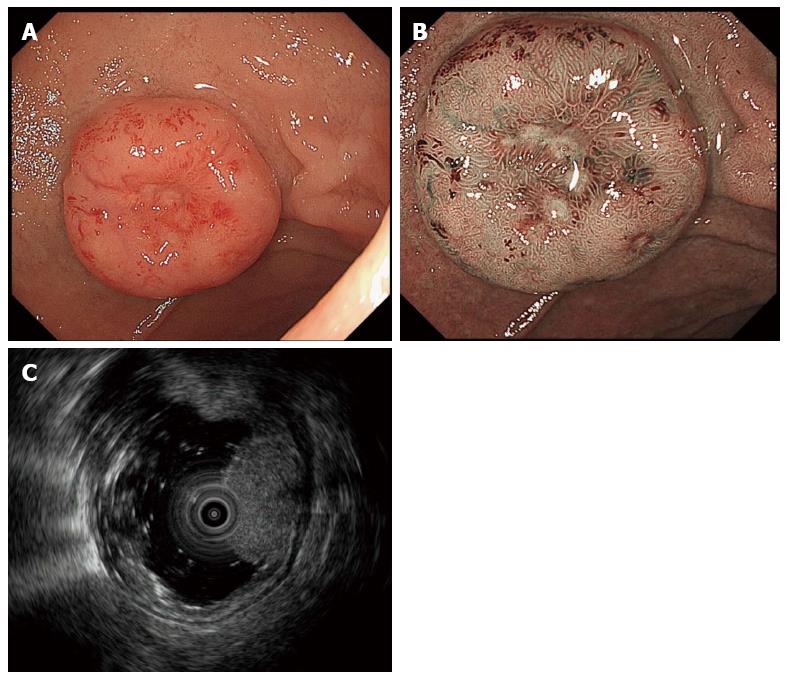Copyright
©The Author(s) 2016.
World J Gastroenterol. Aug 14, 2016; 22(30): 6817-6828
Published online Aug 14, 2016. doi: 10.3748/wjg.v22.i30.6817
Published online Aug 14, 2016. doi: 10.3748/wjg.v22.i30.6817
Figure 2 Duodenal neuroendocrine tumor.
A: Conventional endoscopic image with white light demonstrates a hemispherical reddish polyp with central depression; B: Magnifying endoscopic image with narrow band imaging demonstrates duodenal mucosal pit structures present on the entire surface of the tumor except the area over the central depression. Pit structures are absent over the central depression, and instead, cyan colored, cork-screw shaped, thick capillaries are seen; C: Endoscopic ultrasound (EUS, 20 MHz) demonstrates a slightly hyperechoic intramural structure in the second layer, extending to the third layer (corresponding to the duodenal muscularis propria). EUS: Endoscopic ultrasonography.
- Citation: Sato Y, Hashimoto S, Mizuno KI, Takeuchi M, Terai S. Management of gastric and duodenal neuroendocrine tumors. World J Gastroenterol 2016; 22(30): 6817-6828
- URL: https://www.wjgnet.com/1007-9327/full/v22/i30/6817.htm
- DOI: https://dx.doi.org/10.3748/wjg.v22.i30.6817









